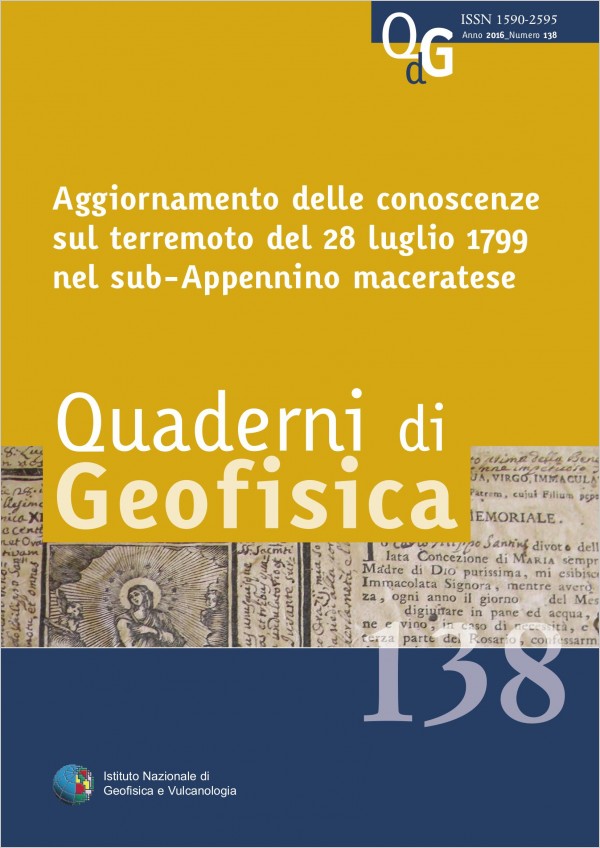The earthquake of July 28, 1799, whose worse effects occurred in the hinterland of the province of Macerata, is one of the main events of the Umbria-Marches region. It is located in a seismogenic zone of transition between the distensive tectonic regime of the Apennines belt and the eastward compressive regime of the Adriatic coast, which makes it a key event for the understanding of this complex area. The distribution of the effects of the 1799 earthquake was reconstructed by several consecutive studies developed by different agencies with different research plans and variable levels of analysis. A careful reading of all these studies shows that the newer ones built up their intensity maps with values partly assessed from raw historical data and partly derived from previous studies (without first checking their correctness against the original data). This choice does not only lead to non-homogeneous results but it also entails the risk of adopting any mistakes made by previous studies and possibly even to distort the image of the earthquake. We (RE)analysed the event, (RE)reading the data provided by all the historical sources identified by previous studies, and (RE)assigned all intensity values according to a standard procedure from original historical data; for each of the assigned values, the historical data used to assign it and a summary of the reasons that dictated the intensity assignment are provided. As a result, the definition of the earthquake is improved; maximum intensity values are more severe than in previous studies but better aligned with the scenarios described by the sources. The presence of two separate areas of maximum damage (already highlighted by the most recent previous study) is confirmed, and this allows to assume that the earthquake of 28 July 1799 had a complex, probably multiple, source.
Published: 2021-10-14

